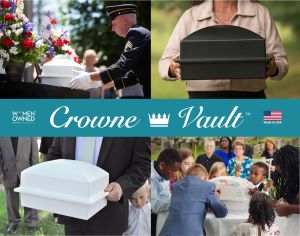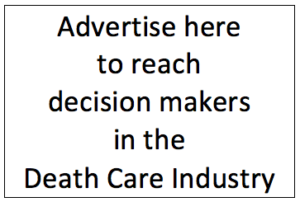How much debt is too much?

Funeral Director Daily ran an article last Friday on the offer made by Park Lawn Corporation in its quest to acquire Carriage Services. You can read that article here.
One of the reader comments to the article indicated that Carriage Services carried “too much debt” and that was hampering, and will continue to hamper their performance going forward. I’m not an accountant and I certainly don’t know if that is true or not, but it did pique my interest in ascertaining the amount of debt that the Big 3 public death care consolidators each carry on their ledgers.
What I have done to make a comparison, and I won’t comment on the comparison but simply let you look at the numbers that I found. I have went to Seeking Alpha and used their numbers for each company at the end of 2022. My comparison looks at the “Total” Revenue each company brings in and compares it to what Seeking Alpha says was the company’s “Long-Term Debt” at the end of 2022.
In essence the number I report on this comparison gives you the amount of debt a company has on its books for every $1 of revenue brought in. There are other metrics to look at for comparison sake, but I chose this method because it is very simple and independent funeral home owners can easily compare it to their own situations.
| Company | 2022 LT Debt | 2022 Total Revenue | Ratio | |
| SCI | $4.172 B | $4.108 B | $1.02: 1 | |
| Carriage Services | $ 587.5 M | $ 370.2 M | $1.59:1 | |
| Park Lawn Corp | $222.6 M | $321.0 M | $0.69:1 |
As you see by this chart, as least in a ratio of Long-Term Debt to Total Revenue, it does appear that Carriage Services carries more than either of the other two companies. This chart would indicate that Carriage Services carries $1.59 in debt for every $1 in Revenue it takes in.
Data obtained from Seeking Alpha:
- SCI Seeking Alpha page
- Carriage Services Seeking Alpha page
- Park Lawn Corporation Seeking Alpha page
Funeral Director Daily take: Debt is a useful tool in growing a business — it allows one to leverage their operations to move forward in a direction faster than they could if they had to save money to purchase all the required operating essentials of a business.
Debt can also “chew up” large portions of revenue of a business if it is not used judiciously and can sometimes get away from operators especially in the case of rising interest rates and variable rate loans.
Debt also, especially when it pertains to independent funeral home operators, is many times a “comfort zone” decision. By that I mean that the owner has to be comfortable and be able to sleep at night knowing that his use of debt is not excessive and manageable even with a downturn in business. In other words, it can be a very personal thing.
I was one who used debt as sparingly as possible. Knowing that I had most things paid for allowed me a freedom that is hard to explain. It’s just the way I’m wired — I prepaid my home mortgage and always tried to make large down payments for automobiles and the like. Being that way probably caused me to miss some opportunities during my career, but I was “comfortable” with my decisions.
I’m guessing at my highest point of debt in the funeral business – which was when I built a new funeral home — I was only at about half of the leverage base, in terms of debt to revenue, that Park Lawn Corporation is at. According to the Seeking Alpha numbers, Park Lawn Corporation is at a $0.69:1 debt to revenue ratio. I was probably at a $0.30:1 debt to revenue ratio.
What’s your Long-Term Debt to Revenue Ratio?. . . and are you comfortable with it?
Disclaimer — The author of this article holds stock positions in Service Corporation International, Carriage Services, and Park Lawn Corporation.
More news from the world of Death Care:
- He used to say he was “Doing Delivery”: Embalmer now finds meaning in serving the dead. The Straits Times (Singapore)
- Fitch affirms Investors Heritage Life Insurance Companies IFS at BBB-. Fitch Ratings
- When you die with no known next of kin — what happens to your body? Print and voice article. WBEZ Public Radio – Chicago (IL)
Enter your e-mail below to join the 3,289 others who receive Funeral Director Daily articles daily:





















Yes what Bob said 😁about debt and Thomas about the conditions!!!
And can someone please write and article about the importance of planting tree and removing the dead ones.
Trees in a cemetery help to cleanse the ground. There’s plenty of foliage that should be planet into a cemetery to create a better ground environment.
“Sure, you can run a FH for 1 maybe 2 years at a high EBITDA by overcharging families, underpaying employees and neglecting your building and vehicles but eventually families go elsewhere, employees quit, and you are left with a run down building and vehicles. Not a good long-term plan! “ Well said.
Thank you for trying to bring some financial literacy to the funeral industry. Unfortunately, our Mortuary Schools don’t put enough emphasis on the financial aspects of operating a funeral home for long term financial success, as they, like most colleges, train you to be an employee, not an owner.
While looking at the Public companies is relatively easy, as most of their information is publicly available, they also have access to financing that private funeral homes don’t have, so it isn’t really apples to apples. If one reviews the balance sheet of Carriage Services you will see that they also have about $219 million in treasury stock at todays price. Treasury stock is stock that the company bought back in the past and is held in reserve but could be sold to the public to raise funds to pay down debt, if Carriage were to do that, that would bring their debt to revenue to about 1:1.
Not saying the public companies were smart about using the resources available to them, actually they were not, as most of them have adjustable-rate debt, and/or short term debt that will cost more when it renews. Even they seem to have fallen in the trap of “free money from the government forever” thinking that will come back to haunt them, rather than locking in low cost debt for decades when they had the chance. The one thing that they can do though is sell stock to raise capital to pay down debt.
While long-term debt to revenue gives a quick indication of a business’s health, a better indicator for independent funeral homes is the Debt Service Coverage Ratio (DSCR) this is also what most lenders use when making a decision on a loan. The DSCR can change from year to year with fluctuations in Net Operating Income (NOI) and interest rates. (Or Quarter to Quarter depending on one’s loan and when it can adjust)
Basically, DSCR is Annual Net Operating Income/Annual Debt Service
Net Operating Income (NOI): Gross income minus operating expenses
Debt-Service: The sum of all current debts, including principal and interest
A deeper dive into the definitions will help you understand these terms better.
• Net Operating Income: Pre-tax amount reflecting gross income less operating expenses, such as cost of goods sold, taxes, rent or lease payments, equipment, parking, amortization and interest in a given period; does not include capital expenditures, such as acquiring or maintaining fixed assets; is not the same number as EBITDA
• Debt Service: Cash needed to pay required principal and interest of a loan during a given period
Once you know how to calculate DSCR, you can get a better sense of your finances and make strategic operating decisions that benefit your business.
An example can help you understand how to calculate DSCR. In this example, net operating income is $1 million, and debt service is $200,000.
$1,000,000 / $200,000 = 5
With a DSCR of 5, this business can cover its existing debt obligations five times over with its current net operating income. When you calculate DSCR, a higher number is better, since it indicates more latitude to cover debts and shows a business is in a better position to cover repayment of a loan. A DSCR of less than 1 means a business’s cash flow can’t cover its debt obligations and reliably repay outstanding debts.
A DSCR of 1 means a business has exactly enough net operating income to cover its debt obligations. This is a tight margin; ideally, businesses want to aim for a minimum DSCR of 2 or higher. Lenders have specific requirements relative to what they are looking for in a loan candidate, but typically look for at least a DSCR of 1.3 or higher.
Most independent FH owners use an SBA loan to acquire a business, specifically the SBA 7(a) loan program. This can be a great loan, as they will allow a borrower to leverage up to 90% of the purchase price, assuming the DSCR falls within their internal guidelines. If the real estate is included in the deal and is valued at 51% or greater of the total loan amount you can even get an amortization of up to 25 years. However, this amount leverage can be a double edge sword as interest rates increase. The problem with SBA 7(a) loans is that almost all of them are adjustable-rate loans, so as interest rates increase so does the monthly payment.
The historically low interest rates we had for the past several years allowed many new owners to pay the inflated EBITDA multiples that brokers were pushing as the low interest rates allowed for a higher loan amount while still being within the DSCR at the time of purchase. They borrowed the full 90% the bank would lend, and just hit the minimum DSCR to get approved. Now that interest rates have increased substantially, many FH owners are finding themselves in a difficult financial situation. Couple this with the rise in cremation, and the drop in revenue/calls from deaths reverting to pre-covid levels and it creates the perfect storm. Many of them will be in technical default of their loan covenants and will be hearing from their bank, if they haven’t already.
Going forward, you are going to see the multiples paid for funeral homes go back to the historical multiples in the 4-6X EBITDA for most funeral homes due to the increased interest rates and their effect on the DSCR calculation. Yes, some of the larger FH’s will still get premium multiples from the public companies or the large PE Backed consolidators, but most funeral homes are looking at 4-6 times adjusted historical EBITDA.
In addition, the EBITDA’s themselves will be more in line with historical averages, as we deal with inflation on everything from caskets to utilities to wages. The brokers “Proforma” (i.e. made up B.S. fiction that may occur in the future) numbers were never realistic or sustainable long term. Do you really believe that the current owner is such an idiot that they couldn’t run it at half the numbers the broker is telling you as a new owner that you can?!?!!?? Oh, and that you are going to magically increase the number of calls as well, and licensed employees will be begging for a minimum wage position with your company so you can get rid of the “over paid” directors that have been there for years to increase the EBITDA.
Sure, you can run a FH for 1 maybe 2 years at a high EBITDA by overcharging families, underpaying employees and neglecting your building and vehicles but eventually families go elsewhere, employees quit, and you are left with a run down building and vehicles. Not a good long-term plan!
Remember, a broker gets paid when a deal closes not if you are successful after the sale, and the more they convince you to pay, the higher their commission.
There will also likely be a rise in the use of earn-outs, as most buyers do not believe the record revenue/calls the past 3 years due to Covid are going to continue going forward. Especially when the broker is trying to base their proforma call numbers on an increase above and beyond the record numbers during peak Covid.
Unfortunately, I believe we are also going to see many funeral homes fail as they struggle to make their payments to the bank when their loans adjust higher and they are squeezed by inflation. Some of these will be nice funeral homes with good operators, unfortunately they likely bought in the last few years at inflated EBITDA multiples and record low interest rates.